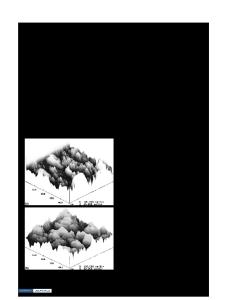Nitrogen Effects on Crystallization Kinetics of Amorphous TiO x N y Thin Films
- PDF / 101,439 Bytes
- 6 Pages / 612 x 792 pts (letter) Page_size
- 18 Downloads / 371 Views
E.A. Stach National Center for Electron Microscopy, Materials Sciences Division, Lawrence Berkeley National Laboratory, Berkeley, California 94720 (Received 29 March 2001; accepted 11 December 2001)
The crystallization behavior of amorphous TiOxNy (x Ⰷ y) thin films was investigated by in situ transmission electron microscopy. The Johnson–Mehl–Avrami–Kozolog (JMAK) theory was used to determine the Avrami exponent, activation energy, and the phase velocity pre-exponent. Addition of nitrogen inhibited diffusion, increasing the nucleation temperature, while decreasing the growth activation energy. Kinetic variables extracted from individual crystallites were compared to JMAK analysis of the fraction transformed, and a change of 6% in the activation energy led to agreement between the methods. From diffraction patterns and index of refraction the crystallized phase was found to be predominantly anatase.
I. INTRODUCTION
Amorphous TiO2 thin films are used in many optical applications because of the material’s high index of refraction and corrosion resistance.1,2 Reactively sputtered TiO2 has a low deposition rate compared to other sputtered oxides. The deposition rate can be increased using feedback loops combined with inert gases.1,3–5 TiO2 sputtered at room temperature is amorphous at relatively high deposition rates. A drawback of amorphous TiO2 is a low crystallization temperature, around 300 °C.6–8 This is a concern in coatings where post-processing temperatures exceed the crystallization temperature.3 TiO2 has three crystalline phases (anatase, rutile, and brookite) each with different optical properties.9–11 The phase stability at high temperatures is crucial for the heat treatment of thin film coatings employing amorphous TiO2; for example, coatings deposited on float glass before a tempering process at a temperature ranging from 650 to 730 °C. Nitrogen added to a TiO2 process has the effect of improving film thickness uniformity across substrates. Adhesion of epitaxial and polycrystalline TiO2 films can be increased by implantation of N ions.12 Nitrogen also has the effect of making the film absorbing and reducing the optical transmittance. As a result, nitrogen is used sparingly. Recent work concerning titanium oxynitride has focused on the addition of oxygen into TiN films and thus has involved investigation of film properties with high concentrations of nitrogen.12–14 TiN coatings are mostly used as strong protective coatings and as absorbent optical coatings. In this paper we focus on the crystallization kinetics of TiOxNy films where x is much larger than y. 550
http://journals.cambridge.org
J. Mater. Res., Vol. 17, No. 3, Mar 2002 Downloaded: 16 Mar 2015
We investigated the effect of nitrogen addition on the crystallization kinetics of TiO2 using the Johnson–Mehl– Avrami–Kozolog (JMAK) equation, which is traditionally used to model crystallization and growth from an amorphous phase.15–17 This formalism was developed for isothermal, random nucleation, which is satisfied in our experiments. Our researc
Data Loading...






